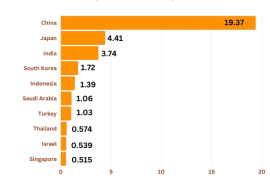The April 2025 Pahalgam terror attack, which killed 26 civilians in Indian-administered Kashmir, has intensified hostilities between India and Pakistan, with repercussions rippling across South Asia. Bangladesh, positioned at the nexus of shifting regional alliances and economic dependencies, faces multifaceted challenges as tensions escalate. Below is an analysis of the potential impacts on Bangladesh across geopolitical, economic, security, and diplomatic domains.
Geopolitical Realignments
Bangladesh’s recent foreign policy pivot toward Pakistan and China has heightened regional tensions. Since the ousting of Sheikh Hasina’s government in 2024, interim leader Muhammad Yunus has prioritized distancing Dhaka from New Delhi while deepening military and intelligence ties with Islamabad. Joint naval exercises, high-level military visits, and intelligence-sharing agreements signal a strategic partnership that India perceives as a threat to its influence in the Northeast.

The Pahalgam crisis amplifies these dynamics:
India’s Security Concerns: New Delhi views Bangladesh’s alignment with Pakistan as enabling cross-border militancy. India fears Pakistan could exploit this partnership to destabilize regions like Manipur through weapon supplies to insurgent groups.
China’s Role: Beijing, which maintains strong ties with both Pakistan and Bangladesh, may temper its support for Dhaka to avoid jeopardizing improving trade relations with India. This leaves Bangladesh more reliant on Pakistan, despite Islamabad’s limited economic capacity to offset lost Indian trade.
Economic Repercussions
Bangladesh’s economy, already fragile post-Hasina, faces compounding risks:
Trade Disruptions
India is Bangladesh’s second-largest trade partner ($15 billion in bilateral trade), supplying critical goods like foodgrains, electricity, and textiles. Border closures and heightened security along India-Pakistan frontiers could delay shipments, inflating costs and worsening supply-chain bottlenecks.
Pakistan’s suspension of trade with India may indirectly strain Bangladesh’s access to Pakistani markets, though bilateral trade remains minimal ($1 billion)5.
Energy and Resource Dependencies
Bangladesh relies on Indian hydropower exports and transit routes for fuel imports. Any escalation in Indo-Pak hostilities could disrupt these arrangements, exacerbating energy shortages.
Security Dynamics
The attack has intensified scrutiny on Bangladesh’s internal stability:
Radicalization Risks
India has accused Dhaka of releasing Islamist radicals jailed under Hasina, some of whom allegedly harbor anti-India sentiments. The Pahalgam backlash could prompt New Delhi to pressure Bangladesh to curb these groups, straining bilateral relations further.
Anti-Hindu violence in Bangladesh, already a point of contention, may escalate if nationalist factions exploit regional tensions.
Border Militarization
India has heightened counterterrorism operations in Kashmir, and similar measures could extend to the Bangladesh-India border, disrupting cross-border commerce and population movements.
Diplomatic Strains
Bangladesh’s balancing act between regional powers is becoming untenable:
India’s Pressure Campaign: New Delhi has leverage through trade dependencies and could impose economic sanctions if Dhaka refuses to distance itself from Pakistan.
International Apathy: With the U.S. disengaging under President Trump, Bangladesh lacks a counterweight to Indian pressure, forcing it to rely on Pakistan and China-partners with limited capacity to provide economic relief.
Water Resource Concerns
India’s suspension of the Indus Water Treaty sets a concerning precedent for Bangladesh, which depends on transboundary river agreements like the Ganges Water Sharing Treaty. New Delhi’s assertive water policies post-Pahalgam could jeopardize Bangladesh’s access to shared resources, escalating bilateral disputes.
Regional Stability and SAARC
The conflict undermines South Asia’s already fractured regional cooperation:
SAARC Stagnation: The India-Pakistan rivalry has long paralyzed the bloc. Renewed hostilities will further hinder collaborative efforts on climate change, trade, and security, isolating Bangladesh from regional solutions.
Refugee Pressures: A full-scale conflict could displace Kashmiris, with spillover effects into neighboring countries, including Bangladesh.
Conclusion
The Pahalgam attack has thrust Bangladesh into a precarious position, magnifying existing vulnerabilities. Geopolitically, Dhaka’s tilt toward Pakistan risks provoking Indian retaliation, while economically, supply-chain disruptions and resource dependencies loom large. Security challenges, from radicalization to border tensions, compound diplomatic struggles amid shifting global alliances. As regional stability erodes, Bangladesh faces a critical test in navigating its ties with adversarial neighbors while safeguarding its sovereignty and economic interests. The coming months will likely determine whether Dhaka can sustain its recalibrated foreign policy-or succumb to the gravitational pull of South Asia’s entrenched rivalries.







